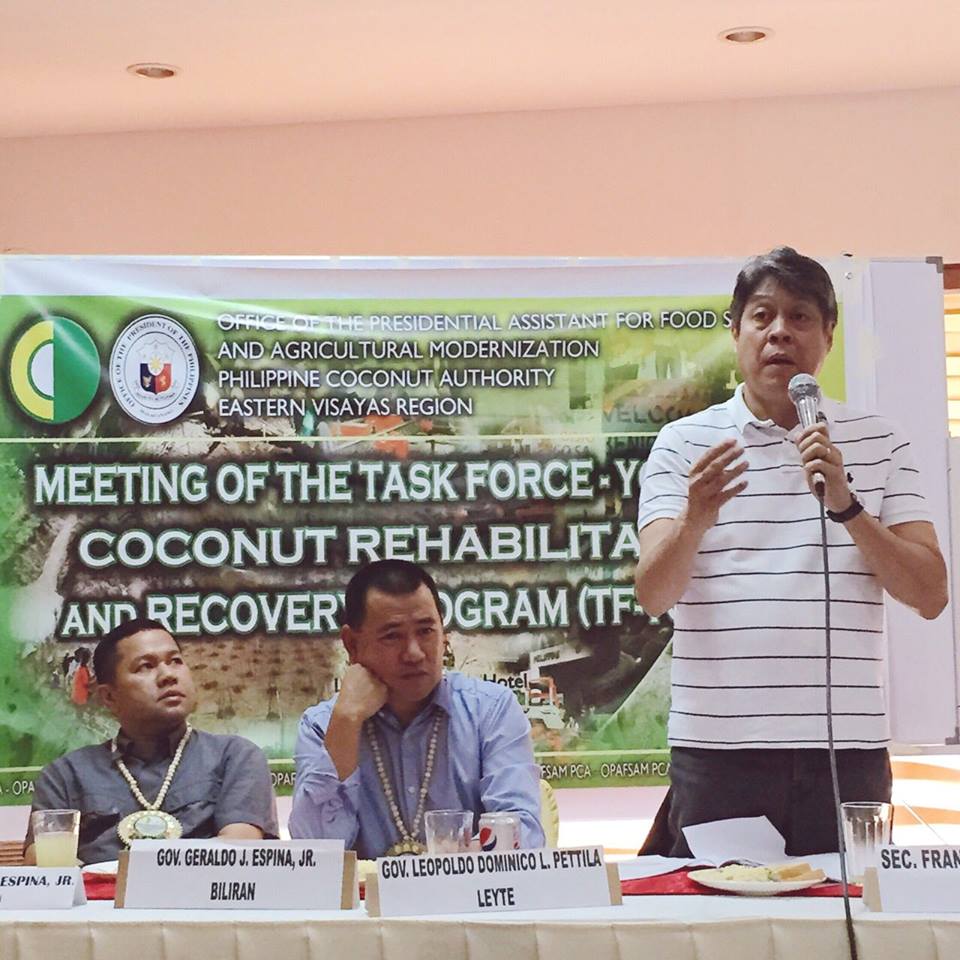
MANILA — Infestation of the coco scale insect (CSI), locally known as cocolisap, would have resulted to an estimated income loss of about Php 1 billion, but intervention by the government prevented this from happening.
This was disclosed by Secretary Francis Pangilinan, Presidential Assistant for Food Security and Agricultural Modernization, in a briefing in Malacanang Wednesday.
Pangilinan said the projected loss is “immeasurable” citing that total affected trees in 2014 alone were estimated at about two million, with each tree producing about 40 nuts.
”But because we were able to prevent these trees from becoming totally damaged, then we were able to have that billion—almost a billion pesos worth of income loss prevented,” he said.
Cocolisap infestation was first experienced in the Philippines in 2010.
However, the air-borne virus attacked again in 2014 affecting coconut farms in Cavite, Laguna, Batangas, Rizal and Quezon (CALABARZON) area as well as the province of Basilan in Mindanao.
On June 5, 2014, President Benigno S. Aquino III issued Executive Order 169, or the “Coconut Scale Insect Emergency Action Program,” to implement emergency measures such as trunk injection and pruning.
Php 750 million has been allocated for this purpose.
Pangilinan said that from June to December 2014, they have used Php 177 million of the total anti-cocolisap measure budget.
He said trunk injection started in June last year after the infestation reached outbreak levels and threatened other areas like Zamboanga and the Bicol region.
In June last year, the Philippine Coconut Authority (PCA) identified 58 municipalities in CALABARZON and Basilan as hotspots.
Some 1.6 million trees were immediately placed under a 60-day treatment, a number which is 128 percent of the government’s target trees, Pangilinan said.
He said the government also used 538,000 biological control agents (biocon) or beneficial insects during the treatment period to provide a balanced ecosystem.
These biocon were placed in 43 sites in Batangas, Laguna and Quezon.
Pangilinan said the treatment operations in CALABARZON lasted for more than 65 days and benefitted nearly 9,000 farmers, who were also provided with about Php 52.8 million replacement income.
He said the measure also benefitted some 27,134 village-based workers.
Some 1.1 million trees in CALABARZON had been controlled enabling the government to control infestation by as much as 90 percent, he said.
The Presidential Assistant said a scientific rapid ground assessment done in the last two months of 2014 “showed that the coconut scale insect infestation after six months and the treatments used are now down to manageable levels.”
”We are no longer in outbreak levels. This means that the trees that had severe infestation prior to treatment now have moderate infestation. Those that had moderate infestation now have low infestation and those with low infestation now have almost zero infestation,” he said.
Also done during the treatment period are the establishments of 23 quarantine checkpoints to prevent the spread of affected nuts among others in high-risk areas or possible areas that can also be affected.
The checkpoints were placed in Bicol, Samar, Leyte and Mindanao.
Pangilinan said they were helped by the Bureau of Plant Industry, the Philippine National Police (PNP), the local government units (LGUs) in Calabarzon and Basilan on this move.
He said the checkpoints registered nearly 4,000 interceptions and 3,000 shipments were found to have permits while about a thousand did not have permits, thus, these were either sent back to their place of origin or properly disposed off.
To date, Pangilinan said only nine municipalities remain as hotspots and these are in Batangas (two municipalities), Laguna (two municipalities), Quezon (four municipalities), and Basilan (one municipality).
And while the government did its best to control the infestation, mother nature helped in, in a way, through Typhoon Glenda, which hit several areas of the country in July 2014.
Pangilinan said the typhoon helped reduce infestation by 425,000 trees.
He, however, admitted that both the government and the farmers need to be vigilant against the virus since it cannot be totally eradicated.
Reports said cocolisap has reached the province of Camarines Sur in the Bicol region and the PCA has confirmed this.
However, Pangilinan said new outbreaks may be prevented because the government is now more knowledgeable about the virus and how it can be addressed.
”At worst maybe a few hundreds or thousands of trees will be affected but because of timely intervention and timely prevention, the previous outbreak will not happen again,” he said.
He said the remaining funds for the program against cocolisap will be used as contingency fund to be used by quick response team that will conduct surveillance and immediate treatment.
He said the virus is feared to be a problem during the summer months, thus, measures are still in place to prevent further infestations.
”We know how damaging this pest can be if it is left unaddressed. Therefore, we have to be prepared,” he added.